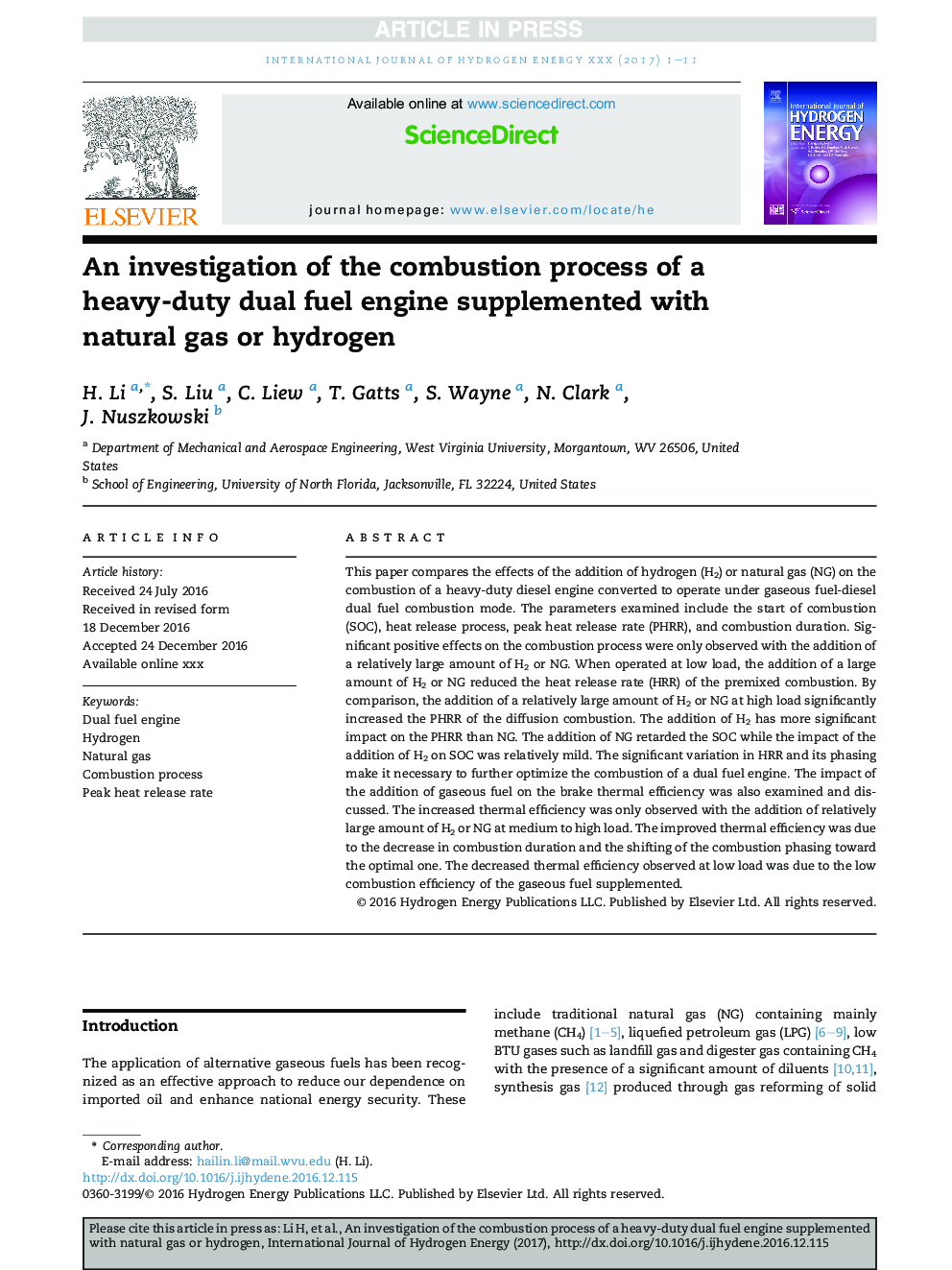| Article ID | Journal | Published Year | Pages | File Type |
|---|---|---|---|---|
| 5148543 | International Journal of Hydrogen Energy | 2017 | 11 Pages |
Abstract
This paper compares the effects of the addition of hydrogen (H2) or natural gas (NG) on the combustion of a heavy-duty diesel engine converted to operate under gaseous fuel-diesel dual fuel combustion mode. The parameters examined include the start of combustion (SOC), heat release process, peak heat release rate (PHRR), and combustion duration. Significant positive effects on the combustion process were only observed with the addition of a relatively large amount of H2 or NG. When operated at low load, the addition of a large amount of H2 or NG reduced the heat release rate (HRR) of the premixed combustion. By comparison, the addition of a relatively large amount of H2 or NG at high load significantly increased the PHRR of the diffusion combustion. The addition of H2 has more significant impact on the PHRR than NG. The addition of NG retarded the SOC while the impact of the addition of H2 on SOC was relatively mild. The significant variation in HRR and its phasing make it necessary to further optimize the combustion of a dual fuel engine. The impact of the addition of gaseous fuel on the brake thermal efficiency was also examined and discussed. The increased thermal efficiency was only observed with the addition of relatively large amount of H2 or NG at medium to high load. The improved thermal efficiency was due to the decrease in combustion duration and the shifting of the combustion phasing toward the optimal one. The decreased thermal efficiency observed at low load was due to the low combustion efficiency of the gaseous fuel supplemented.
Related Topics
Physical Sciences and Engineering
Chemistry
Electrochemistry
Authors
H. Li, S. Liu, C. Liew, T. Gatts, S. Wayne, N. Clark, J. Nuszkowski,
